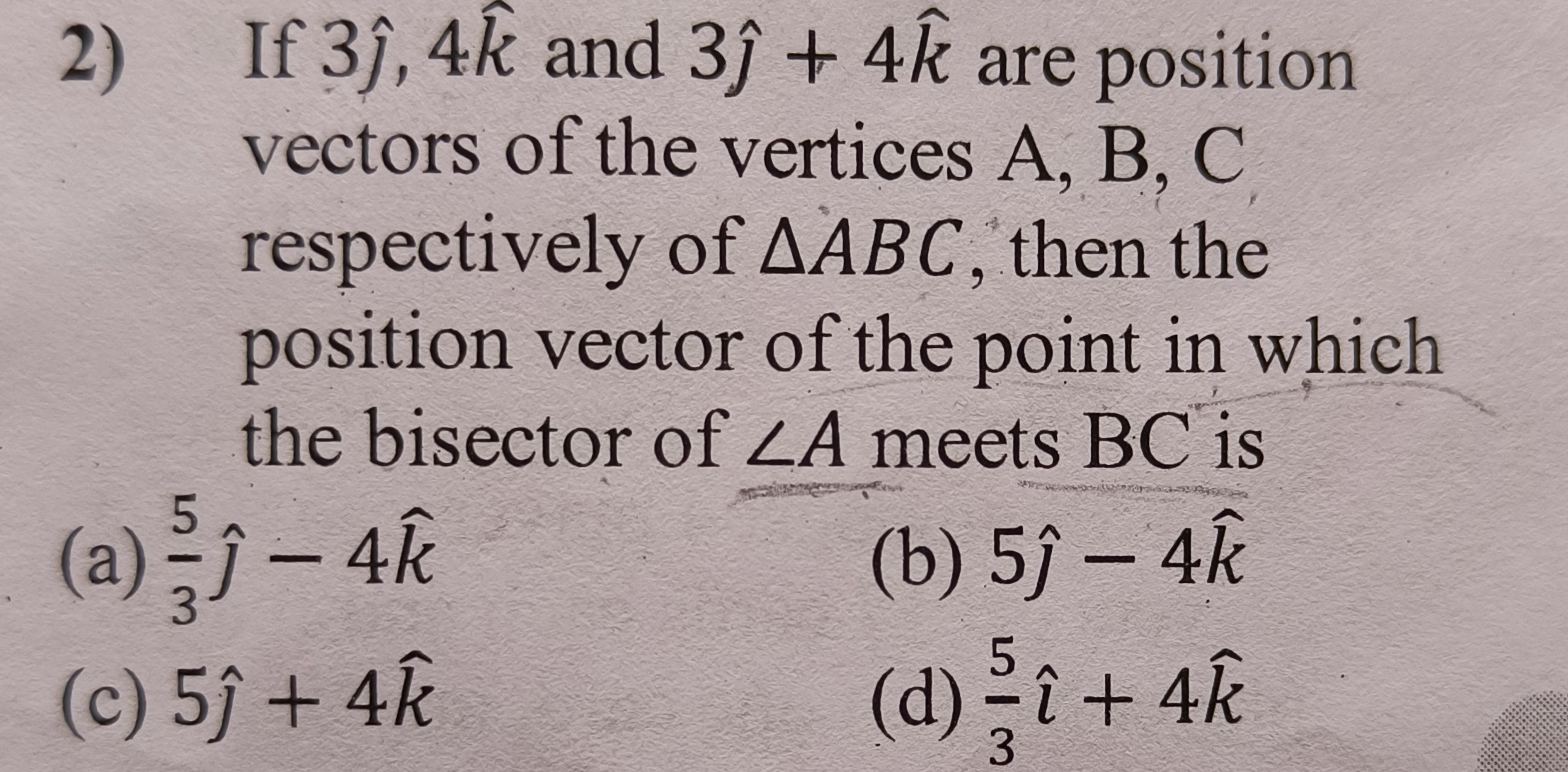Question
Question: If $3\hat{j}$, $4\hat{k}$ and $3\hat{j}+4\hat{k}$ are position vectors of the vertices A, B, C respe...
If 3j^, 4k^ and 3j^+4k^ are position vectors of the vertices A, B, C respectively of △ABC, then the position vector of the point in which the bisector of ∠A meets BC is

A
35j^−4k^
B
5j^−4k^
C
5j^+4k^
D
35i^+4k^
Answer
35j^+4k^
Explanation
Solution
Let the vertices be
A=3j^,B=4k^,C=3j^+4k^.In triangle ABC, the bisector of ∠A meets side BC. By the Angle Bisector Theorem, if D is the point on BC where the bisector meets, then
DCBD=ACAB.Step 1. Find lengths AB and AC.
- AB=∣A−B∣=∣3j^−4k^∣=32+42=5.
- AC=∣A−C∣=∣3j^−(3j^+4k^)∣=∣−4k^∣=4.
Thus,
DCBD=45.Step 2. Write the position vectors of B and C:
B=4k^,C=3j^+4k^.Using the section formula, the position vector of D (dividing BC in the ratio BD:DC=5:4) is given by:
D=5+44B+5C=94(4k^)+5(3j^+4k^).Calculate:
4(4k^)=16k^,5(3j^+4k^)=15j^+20k^.Thus,
D=915j^+(16+20)k^=915j^+36k^=35j^+4k^.Therefore, the correct answer is 35j^+4k^, which does not match any of the options exactly.
